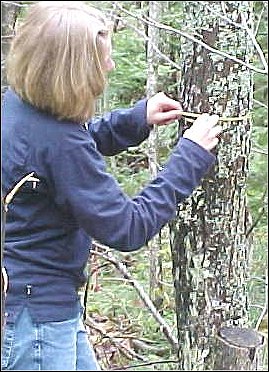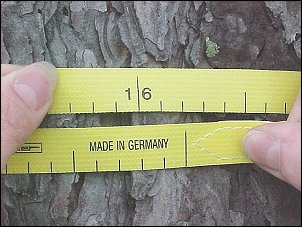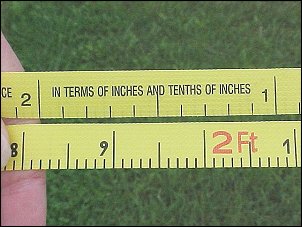

Home Page |
MICHIGAN FORESTS FOREVER TEACHERS GUIDE
| MEASURING TREE DIAMETERS |  |
MEASURING TRUNK DIAMETERS OF TREES
|
Why do this? Tree diameter is a key piece of forest inventory data. Tree diameters represent volume and stand density. These two factors are very important in determining forest management options. Diameter at Breast Height (dbh). “dbh” is the term foresters use regarding tree diameter. Diameters are measured at 4.5 feet from the ground, an industry standard. Exactly “where” the dbh line should be placed on a tree has many rules that take into account uneven ground surfaces, slopes, and major trunk form anomalies (forks, swelling, etc.). Usually, dbh is measured from the high side or uphill side of the tree, from where the ground is highest. Diameter tapes or d-tapes. These specialized measuring tapes are calibrated to read diameter, rather than linear distance. The d-tape is wrapped around the tree, making sure the tape is level. Typically, each person will know where “dbh” is their body, then make sure that they stand at the correct place next to a tree, or make appropriate adjustments to obtain the proper height. Accuracy is important. As little as a tenth of an inch difference is large. Each tree is a sample that represents many other trees. Accuracy can be maximized by correct use of the d-tape and proper selection of where the diameter should be measured. |

|
 dbh is 16.2 inches |

Diameter scale is on top |
 |
This website was developed and created by Michigan State University Extension for the teachers of the State of Michigan. |
Page Name:
Curriculum/SupportDocs/Dtape.htm